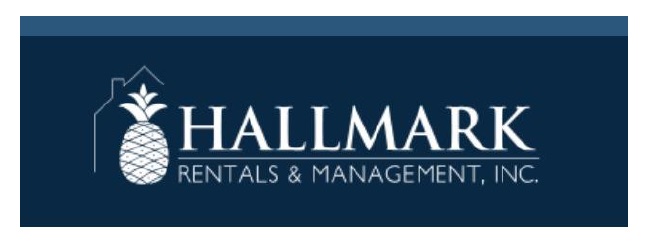Grand Rapids, Michigan — In 2010, Stryker Corp. of Kalamazoo, Michigan; Stryker Puerto Rico, Ltd. and Stryker Sales Corp. (collectively, “Stryker”), sued Zimmer, Inc. and Zimmer Surgical, Inc. of Warsaw, Indiana (collectively, “Zimmer”), alleging  infringement of U.S. Patent Nos. 6,022,329; 7,144,383; and 6,179,807, which have been issued by the U.S. Patent Office. A jury awarded $70 million in damages. In August 2013, the U.S. District Court for the Western District of Michigan trebled the jury’s award. The court also awarded supplemental damages, which were also trebled; attorneys’ fees and prejudgment interest.
infringement of U.S. Patent Nos. 6,022,329; 7,144,383; and 6,179,807, which have been issued by the U.S. Patent Office. A jury awarded $70 million in damages. In August 2013, the U.S. District Court for the Western District of Michigan trebled the jury’s award. The court also awarded supplemental damages, which were also trebled; attorneys’ fees and prejudgment interest.
Stryker and Zimmer are the two principal participants in the market for orthopedic pulsed lavage devices. A modern, orthopedic pulsed lavage device is a combination spray-gun and suction-tube, used by medical professionals to clean wounds and tissue during surgery. In 2010, Stryker sued Zimmer, alleging that Zimmer’s line of Pulsavac Plus pulsed lavage devices infringed three of Stryker’s patents — U.S. Patent No. 6,022,329 (“the ‘329 patent”), U.S. Patent No. 7,144,383 (“the ‘383 patent”) and U.S. Patent No. 6,179,807 (“the ‘807 patent”). Zimmer lost every argument it advanced at claim construction and subsequently lost most of the disputed claims on summary judgment. After claims construction and summary judgment, one infringement claim and 22 invalidity defenses remained for trial.
In February 2013, after two weeks of trial — featuring hundreds of exhibits, more than a dozen witnesses, and multiple days of deliberation — the jury returned a verdict unequivocally in Stryker’s favor. In particular, the jury found: (1) that the Pulsavac Plus products infringed upon the ‘329 patent; (2) that Zimmer failed to establish any of its 22 invalidity contentions; and (3) that Stryker was entitled to $70 million in lost profits.
Zimmer brought ten post-verdict motions for judgment as a matter of law (“JMOL”) or for a new trial:
- for JMOL to preclude Stryker from recovering lost profits damages from before November 5, 2010;
- for JMOL as to the invalidity of claim 2 of the ‘329 patent, or, in the alternative, for a new trial on the validity of claim 2;
- for JMOL barring Stryker from recovering pre-suit damages under the doctrine of laches;
- for JMOL of non-infringement of claim 2 of the ‘329 patent, or, in the alternative, for a new trial on the issue of non-infringement of claim 2;
- for JMOL limiting Stryker’s damages because Stryker failed to mark its pulsed lavage devices in accordance with 35 U.S.C. § 287(a) and for a new trial on the issue of marking;
- for a new trial;
- for JMOL that Stryker’s asserted claims under the ‘383 patent are invalid, or, in the alternative, for a new trial on the validity of those claims;
- for JMOL that claims 45, 50, 51, and 52 of the ‘807 patent are invalid, or, in the alternative, for a new trial on the validity of those claims;
- for JMOL that Zimmer did not willfully infringe Stryker’s patents; and
- for JMOL to preclude Stryker from receiving lost profits damages and limiting Stryker’s reasonable royalty recovery, or, in the alternative, for a new trial on damages.
In its 58-page decision, the court discussed the various motions by Zimmer and elucidated the standard for granting a JMOL: Rule 50 of the Federal Rules of Civil Procedure permits a court to render JMOL only if a party has been fully heard on an issue and there is no legally sufficient evidentiary basis for a reasonable jury to find for that party on that issue. It then discussed the standard for granting a new trial following a jury trial: “a court may grant a new trial under Rule 59 if the verdict is against the weight of the evidence, if the damages award is excessive, or if the trial was influenced by prejudice or bias, or otherwise unfair to the moving party.”
The court held that neither the standard for granting JMOL nor the standard for granting a new trial had been met in any instance and denied all ten motions.
Stryker also brought several post-verdict motions; specifically, it sought:
- a permanent injunction against Zimmer or, in the alternative, an ongoing royalty;
- supplemental damages;
- a finding that the case was an “exceptional case” and an award of attorney’s fees;
- an award of prejudgment interest; and
- enhanced damages for willful infringement.
Each of Stryker’s five motions was granted. The court entered a permanent injunction prohibiting Zimmer from manufacturing, marketing or selling any products found to have infringed the ‘807 patent, including the infringing Pulsavac Plus products. This was held to be appropriate as the evidence had shown that Zimmer’s sale of infringing products had cost Stryker between 15% and 18% of its market share. Such a loss of market share to an infringer was cited as a textbook example of irreparable harm which, in turn, supported the injunction.
Supplemental damages were also awarded. The court held that the jury’s $70 million award to Stryker of lost profits reflected the damages Stryker had suffered only through November 30, 2012. Subsequently, Zimmer had supplemented the sales data for its infringing products, reflecting sales from December 1, 2012 through February 28, 2013. Based on those supplemental data, Stryker’s damages expert calculated Stryker’s additional lost profits for that time frame to be $2,351,257.66, which the court awarded.
Stryker also moved for an award of attorneys’ fees under 35 U.S.C. § 285. Section 285 provides that, if the prevailing party establishes by clear and convincing evidence that the case is “exceptional,” the court may exercise its discretion to award attorneys’ fees. The court cited various factors that could be used in determining whether a case was exceptional, for example: “willful infringement, fraud or inequitable conduct in procuring the patent, misconduct during litigation, vexatious or unjustified litigation, [or] conduct that violates Federal Rule of Civil Procedure 11.” The court awarded Stryker’s attorneys’ fees, holding that that the jury’s finding of willful infringement weighed heavily in favor of such an award (“indeed, when a trial court denies attorney fees in spite of a finding of willful infringement, the court must explain why the case is not ‘exceptional’ within the meaning of the statute.”)
Prejudgment interest of $11,167,670.50 was also granted on both the jury award and the supplemental lost-profit damages Stryker incurred from December 1, 2012 to February 28, 2013. In addition, for the same reasons the court found this to be an “exceptional case,” the court awarded Stryker additional prejudgment interest on its reasonable attorney’s fees.
Stryker’s final motion was for enhanced damages under 35 U.S.C. § 284, based on Zimmer’s willful infringement. Under § 284, “the court may increase the damages up to three times the amount found or assessed” at trial. For this determination, the court referred to Read Corp. v. Portec, Inc.. In Read, the Federal Circuit held that the “paramount determination in deciding to grant enhancement and the amount thereof is the egregiousness of the defendant’s conduct based on all the facts and circumstances.” In evaluating the egregiousness of the defendant’s conduct, courts typically rely on the nine Read factors, which are:
- whether the infringer deliberately copied the patentee’s ideas or design;
- whether the infringer investigated the scope of the patent and formed a good faith belief that it was invalid or not infringed;
- the infringer’s conduct during litigation;
- the infringer’s size and financial condition;
- closeness of the case;
- duration of the infringing conduct;
- remedial actions, if any, taken by the infringer;
- the infringer’s motivation for harm; and
- whether the infringer attempted to conceal its misconduct.
The court found that all nine Read factors favored substantial enhancement of the jury’s award. It noted that, regarding the first factor, multiple trial witnesses testified that Zimmer deliberately copied Stryker’s patented inventions. On the second factor, Zimmer had presented no evidence that it had retained intellectual property counsel to advise it about the scope of Stryker’s patents to form a good faith belief about invalidity or infringement, or that it had or had otherwise investigated whether it was likely infringing. The third factor also favored enhancement, as Zimmer had needlessly delayed in producing requested information concerning its application for a patent for the Pulsavac Plus. With respect to the fourth factor, the court noted that Zimmer is a multi-billion dollar company with reported annual profits in excess of three-quarters-of-a-billion dollars. It opined that while a $70 million verdict may sound large in the abstract, in the context of the substantial size and profitability of Zimmer, $70 million may not be enough, without enhancement, to deter infringing conduct.
As to the fifth factor, the court noted for again that this was not a close case. Every major decision — from claim construction through post-verdict motions — had gone against Zimmer. On the sixth factor, the court commented that Zimmer’s infringement had spanned more than a decade, from 2000 all the way through the date of the opinion. With respect to the seventh factor, the court observed that at no point during its 12-plus years of infringement had Zimmer taken any remedial action to stop infringement or mitigate damages, including the two-plus years covered by the litigation. In fact, as of the date the opinion was written, Zimmer was still manufacturing and selling the infringing products. The eighth factor also counseled in favor of enhancement, principally because Zimmer and Stryker had been the only major competitors in the orthopedic pulsed lavage device market. As a result, Zimmer’s infringement of Stryker’s patents could only have been motivated by a desire to harm Stryker by depriving it of market share. Finally, on the ninth factor, although Zimmer had not attempted to hide the entirety of its misconduct, it had attempted to prevent Stryker from discovering certain aspects of its infringement in the period before the trial.
The court held that its analysis of the Read factors “overwhelmingly favor enhancement.” In accordance with that analysis, the court trebled both the jury’s award of $70 million and the court’s award of supplemental damages.
In total, Zimmer has been ordered to pay Stryker over $228 million. According to Reuters, Zimmer plans to appeal both the jury verdict and the recent rulings by the court.
Practice Tip:
While Zimmer’s decision to infringe was presumably a business strategy, the findings of willfulness — and, later, egregiousness — made this approach an extremely expensive one. The court acknowledged and considered Zimmer’s tactic in its opinion, stating, “Zimmer chose a high-risk/high-reward strategy of competing immediately and aggressively in the pulsed lavage market and opted to worry about the potential legal consequences later.”
Willfulness consists of two elements: (1) an objective element that is often, but not always, a question of law, and (2) a subjective element that is inherently a question of fact, to be decided by the jury.
Under the first prong, if an “accused infringer’s position is susceptible to a reasonable conclusion of no infringement,” the infringer’s conduct cannot be objectively unreasonable. Conversely, an action is objectively unreasonable if the infringer acted despite an objectively high likelihood that its actions constituted infringement of a valid patent.
When considering the second prong — the element of subjective willfulness — fact-finders should consider: (1) whether the infringer copied the patentee’s commercial products; (2) whether the infringer presented evidence that it obtained legal opinions of patent counsel to justify its infringing actions; (3) whether the infringer attempted to avoid infringement by designing around the patents; and (4) whether the infringer acted in accordance with the standards of commerce.
Continue reading







